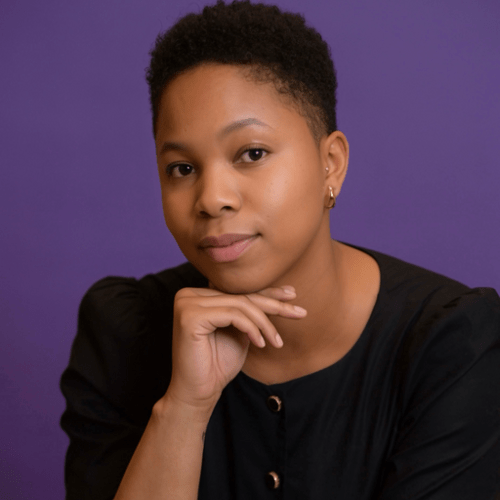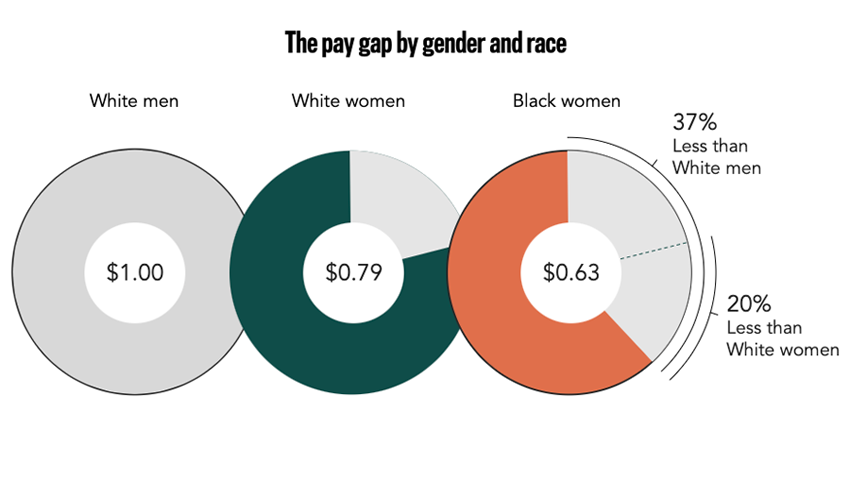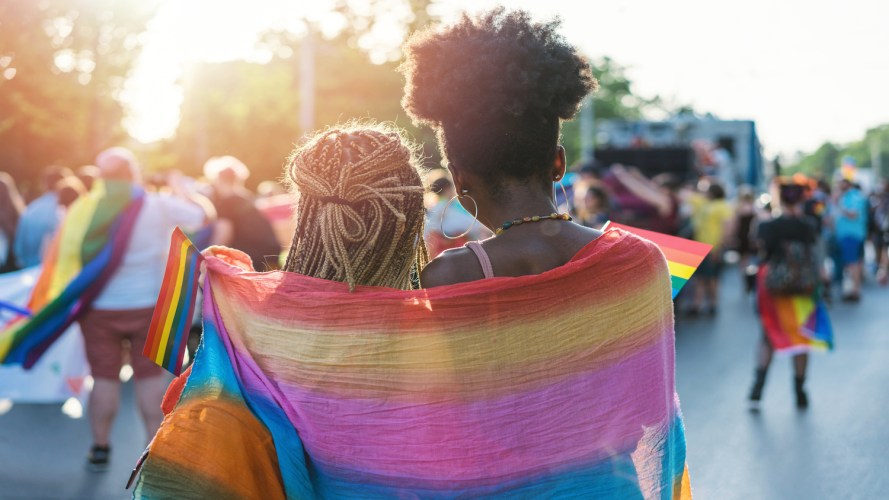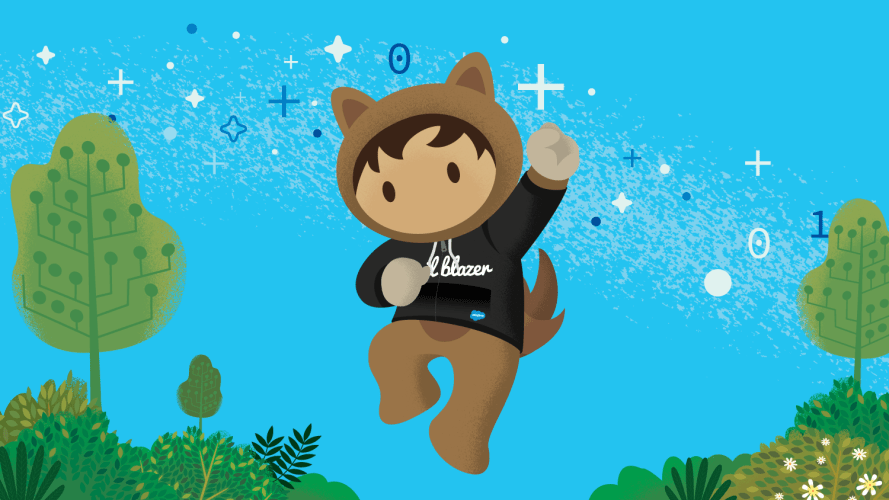3 Things To Remember on Black Women’s Equal Pay Day



On August 3, we recognize Black women’s equal pay day which symbolizes how far into the year Black women have to work in order to earn what men earned the year before.

Jameelah Nasheed
In March, we recognized Equal Pay Day — a day that symbolizes how far into the year women have to work in order to earn what men earned the year before. However, Black Women’s Equal Pay Day falls even later in the year. On average, Black women have to work until August to earn what white men earned the previous year. In 2021, Black Women’s Equal Pay Day falls on August 3.
Generally, Black men earn 87 cents for every $1 white men earn, and white women earn 82 cents to that same dollar. Meanwhile, Black women only earn 63 cents for every $1 white men earn. The gender wage gap and racial wage gap are both very real, and are more pronounced when they intersect. Over the last year the racial wealth gap came into sharp focus as our society confronted systemic inequalities. Companies like Salesforce took action including investing in Black-owned businesses.
According to the Harvard Business Review, the net wealth of a typical Black family in America is around one-tenth that of a white family, and wealth inequalities between Black and white households haven’t improved over the past 70 years. This is painful reality is rooted in a deep history of slavery and segregation. Despite the progress made, the repercussions of those days are still prevalent in the lives of Black Americans, who, for years, haven’t had access to wealth-building opportunities. For example, in June this year, we commemorated the centennial of Tulsa’s Race Massacre, where the city in Oklahoma’s Greenwood District, also referred to as “Black Wall Street,” was violently destroyed by a racist attack. Many other factors, including redlining, systemic inequalities in banking, and more have contributed to the ongoing gap — and Black Women’s Equal Pay Day is a reminder of the work that still needs to be done today.
Here are 3 things to remember on Black Women’s Equal Pay Day
1. The pay gap still persists
Despite progress, we’ve made as a society to advance gender equality, there is still work to be done for Black women. According to the Institute for Women’s Policy Research, it will take Black women until 2130 to catch up to white men when it comes to earnings — 110 years from now. For context, it will take white women until 2059 to catch up to the pay of white men.

Companies can be proactive in correcting pay inequities and adopting inclusive practices to prevent them from taking place in the future. For example, since 2015, Salesforce has been conducting company-wide equal pay assessments by gender globally and race in the U.S. As a result, we have invested more than $16 million to ensure equal pay for equal work and are committed to the work ahead to truly address the pay gap and equality.
2. Black women tend to be overqualified and underestimated
At our annual racial equality summit, Representation Matters, Arlan Hamilton, founder and managing partner, Backstage Capital, said people of color are not underrepresented, we’re actually “underestimated.” Despite Black women being one of the most educated demographics in the U.S., reports show Black women often need to have more qualifications to receive the same opportunities. According to Lean In’s Women in the Workplace study, for every 100 entry-level men who are hired, only 64 Black women are hired, and for every 100 entry-level men promoted to manager roles, only 58 Black women are promoted.
As the saying goes — talent is everywhere but opportunity is not. It’s critical we begin to address and mitigate bias in the hiring process to ensure we open access to the amazing talent that exists around us, including Black Women. At Salesforce, alongside our Racial Equality and Justice taskforce, we implemented bias training for all of our recruiters, interviewers, and hiring managers. As a result of training and new equity-focused practices, we saw progress in the hiring of Black candidates.;
Studies have shown companies with diverse workforces have higher rates of employee engagement and innovation. Meaning, investing in Black women is not only the right thing to do, it’s also the smart thing to do.
3. Gender equality must include women of color
As we recognize Black Women’s Equal Pay Day, it’s important to remember that this also impacts women from other historically marginalized groups. Native American Women’s Equal Pay Day is September 8 this year, which means they earn on average 60 cents for every dollar white men make, and Latina Equal Pay Day is October 21st, earning on average 55 cents for every dollar white men make.

The commitment to racial equality includes economic equality. Achieving and maintaining equal pay for all requires transparency and intentionality, but it is possible. Take action today in your organization to drive change and close the pay gap for women of color. As Molly Q. Ford, our vice president of Global Equality Programs has said, “It’s important when we address equal pay to speak honestly about the different challenges women of color face. And we can not put the burden on women or women of color to solve the gap.”
At Salesforce, equality is a core value and we are committed to driving equality for all — that includes equal opportunities and creating a workplace that reflects our society. There is still work to be done on this path toward equality, and using our platform for these important discussions is only one step along this path. In 2020, we established the Racial Equality and Justice Taskforce to help drive systemic change in our workplace and community, and we will continue to provide updates on our equality efforts. Learn more at Salesforce.com/Equality.























